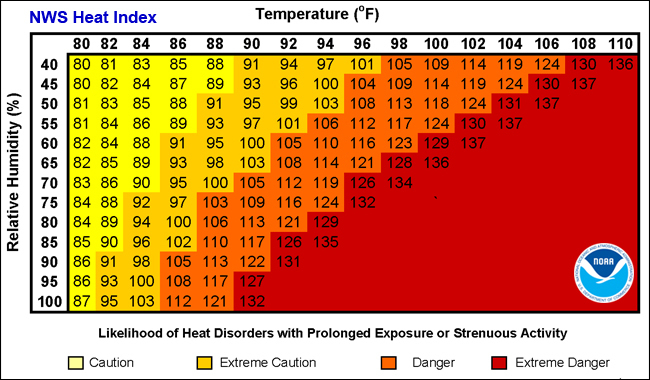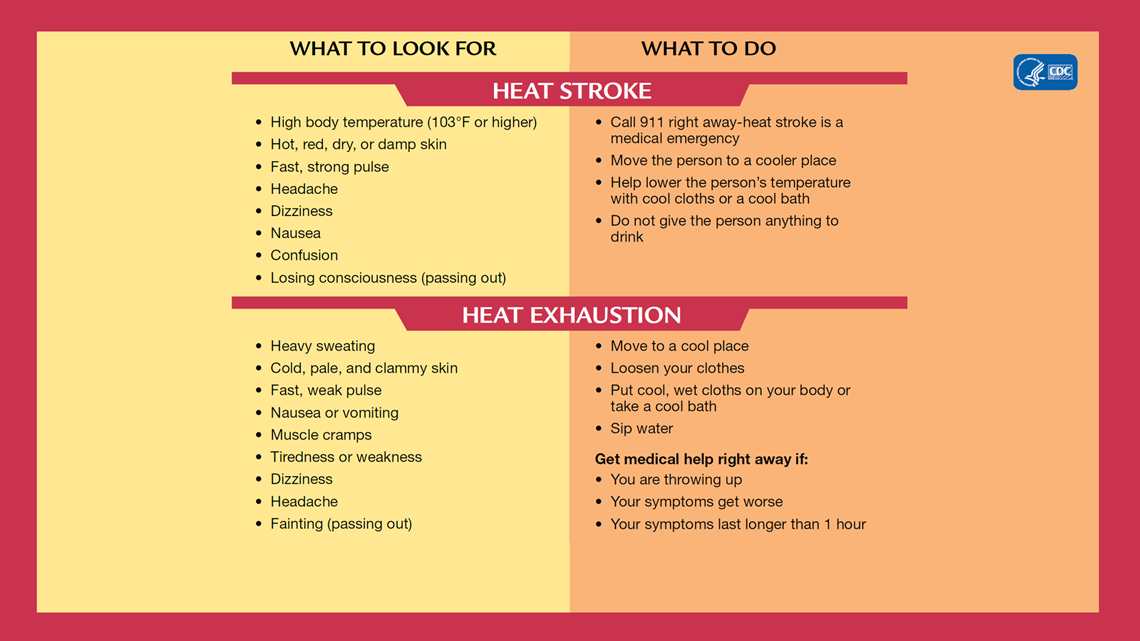Heat index Explained
Sources: Wikipedia and National Weather Service
The heat index, also known as the apparent temperature, is what the temperature feels like to the human body when relative humidity is combined with the air temperature, in shaded areas. For example, when the temperature is 32 °C (90 °F) with 70% relative humidity, the heat index is 41 °C (106 °F) (see table below). The heat index is meant to describe experienced temperatures in the shade, but it does not take into account heating from direct sunlight, physical activity or cooling from wind.

This has important considerations for the human body's comfort. When the body gets too hot, it begins to perspire or sweat to cool itself off. If the perspiration is not able to evaporate, the body cannot regulate its temperature. Evaporation is a cooling process. When perspiration is evaporated off the body, it effectively reduces the body's temperature. When the atmospheric moisture content (i.e. relative humidity) is high, the rate of evaporation from the body decreases. In other words, the human body feels warmer in humid conditions. The opposite is true when the relative humidity decreases because the rate of perspiration increases. The body actually feels cooler in arid conditions. There is direct relationship between the air temperature and relative humidity and the heat index, meaning as the air temperature and relative humidity increase (decrease), the heat index increases (decreases).
The heat index values in the chart above are for shady locations. If you are exposed to direct sunlight, the heat index value can be increased by up to 15 °F. As shown in the table below, heat indices meeting or exceeding 103 °F can lead to dangerous heat disorders with prolonged exposure and/or physical activity in the heat.

Please refer to the Wikipadia page sourced above for the mathematical formula. An online calculator can be found HERE.
Heat stroke or heatstroke, also known as sun-stroke, is a severe heat illness that results in a body temperature greater than 40.0 °C (104.0 °F), along with red skin, headache, dizziness, and confusion. Sweating is generally present in exertional heatstroke, but not in classic heatstroke. The start of heat stroke can be sudden or gradual. Heatstroke is a life-threatening condition due to the potential for multi-organ dysfunction, with typical complications including seizures, rhabdomyolysis, or kidney failure.





